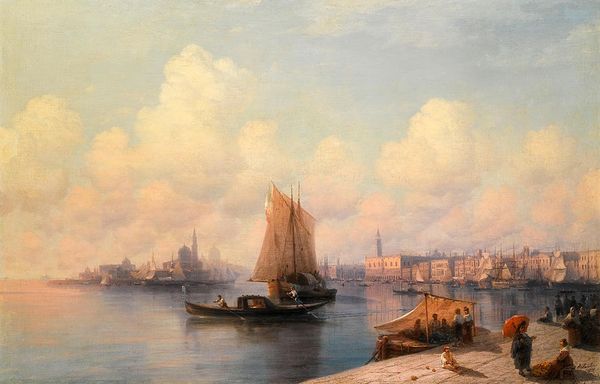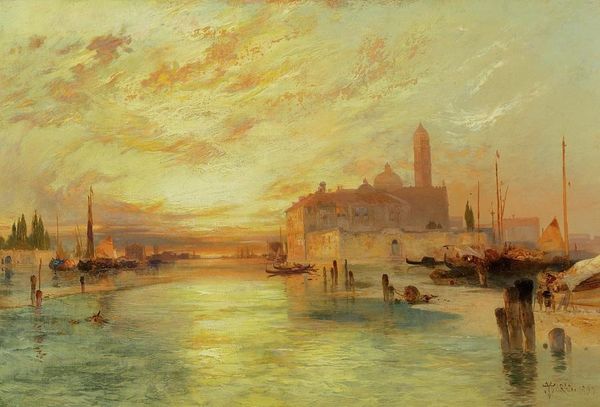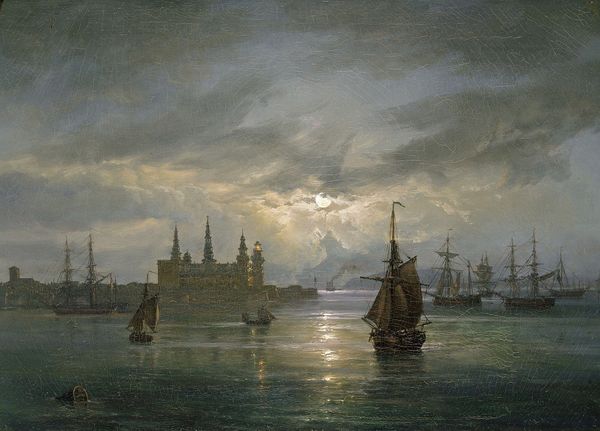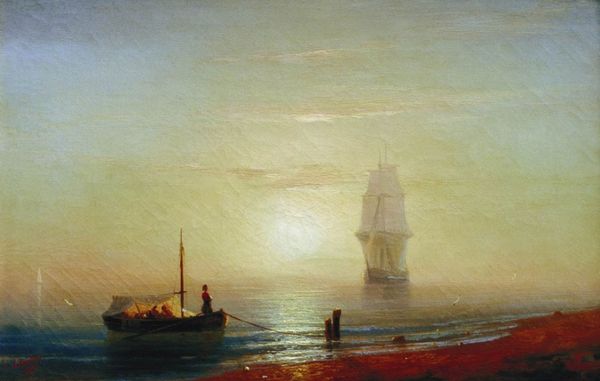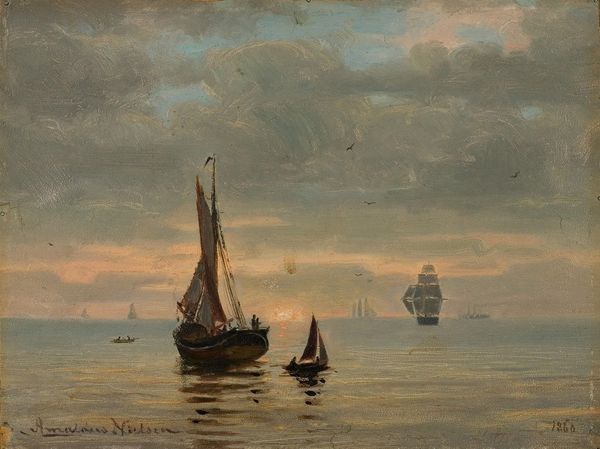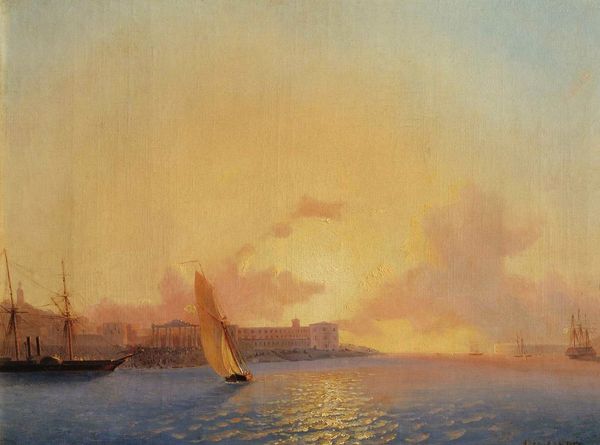
painting, oil-paint
#
boat
#
sky
#
ship
#
painting
#
impressionist painting style
#
oil-paint
#
landscape
#
waterfall
#
river
#
oil painting
#
romanticism
#
water
#
cityscape
Dimensions: 40 x 58 cm
Copyright: Public domain
Curator: This is Ivan Konstantinovich Aivazovsky's "Smolny Convent," painted in 1849. Editor: It’s luminous, almost overwhelmingly so! The light feels thick, like honey glazing everything. Curator: Absolutely. Aivazovsky, famed for his seascapes, consistently presented imperial Russia in a particularly favorable light. Notice the golden sky over the Smolny Convent—how might we interpret that considering Russia’s history of autocratic power? Editor: I’m immediately drawn to the labor implied here, both in its making and depicting. How were the paints sourced, ground, and mixed? The ships too—think of the materials, the wood, the canvas. These are built objects. Curator: Right, we can delve into the raw materials used. But the political is also paramount. Think of the role the convent played, its link to female education during a time when opportunities for women were severely limited, all overseen, of course, by the state. This isn't a neutral portrayal of light; it's a deliberate construction. Editor: Constructed through pigment, though. Look at the way the light dances on the water. This wasn't spontaneously captured; this texture and the application represent considerable skill and a dedicated process. The materiality of paint creates the *idea* of light, reflective of the artist's expertise. Curator: Of course. But consider the narrative: a serene view that reinforces a carefully curated image of Imperial Russia— an empire often built on exploitation and oppression. The beauty is intertwined with power, deliberately obscuring certain social realities. The radiant glow softens the harsher edges of autocracy. Editor: I can agree on the visual softness that is evident within the piece, but looking closely, the brushstrokes used to create that very 'glow' are really visible, especially around the horizon, almost vibrating with their own energy. So, while softening a landscape overall, they add this almost tangible energy within the materials. Curator: An energy, yes, but an energy harnessed and directed toward reinforcing existing power structures through this romantic idealization of place. Editor: So, while this painting has layers of encoded imagery that might speak to control, we can't dismiss that labor, material, and vision created it. It brings another dimension to my reading of it. Curator: Indeed. This work reminds us of the power dynamics at play even in seemingly tranquil scenes, a dialogue necessary for considering visual art’s social function.
Comments
No comments
Be the first to comment and join the conversation on the ultimate creative platform.
